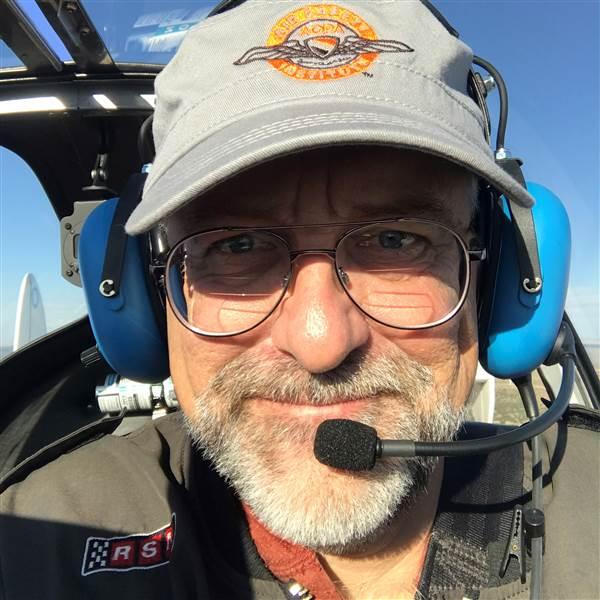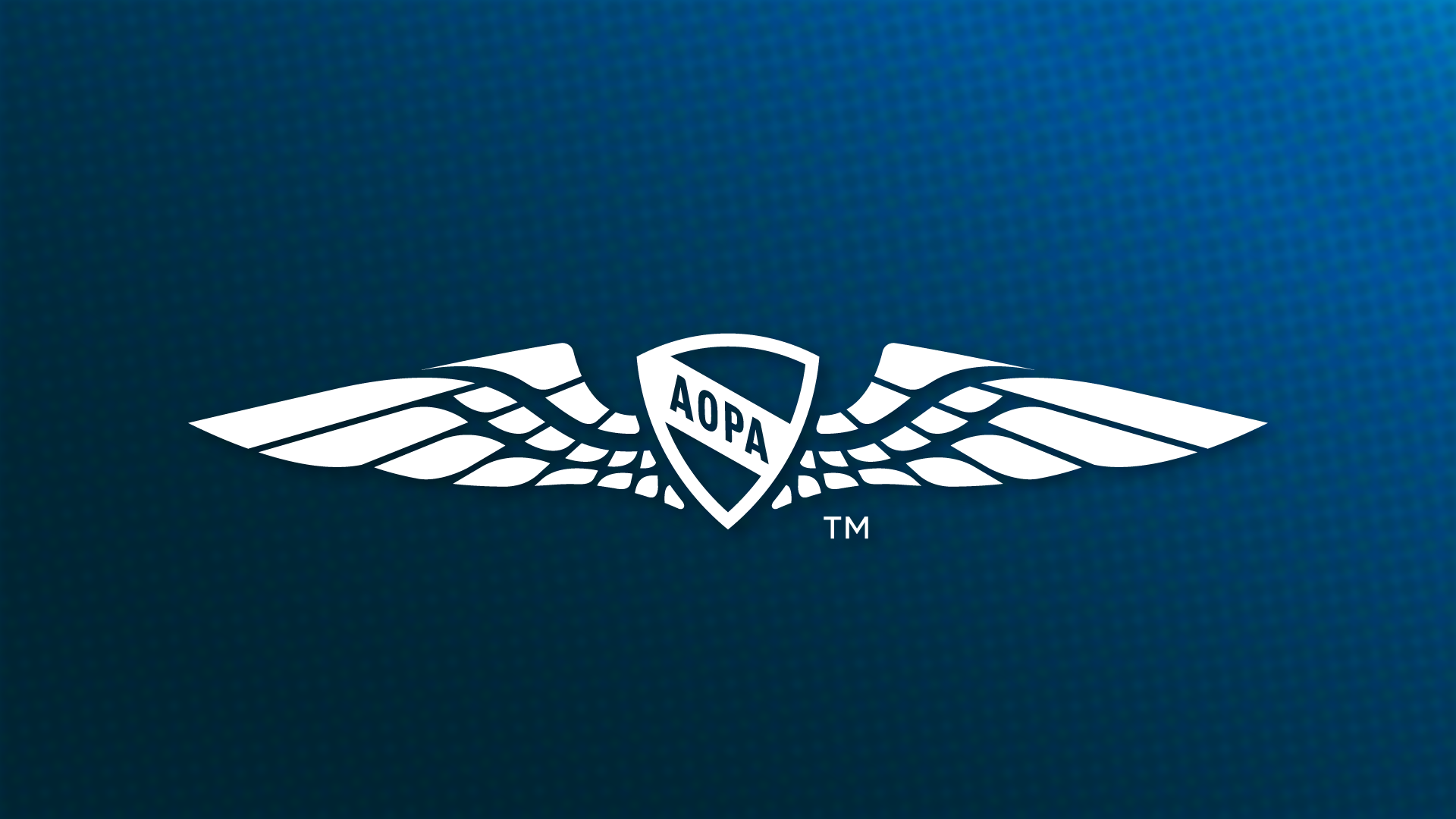A Whole New World
How to become a drone pilot

Master switch On. The beacon bathes the helipad in pulsing red light. I start the engine, and the rotor blades begin to spin: slowly for less than a breath, then dissolving into a barely discernible blur.
The helicopter stays glued to the ground. Tentatively, I add power. Nothing happens. I add more. My goal is to rise off the pad and hover, just to get the feel of this new bird. I’m not even planning to go anywhere. Just up. Just up in the air, and then come back down again.
But the helicopter remains firmly on the ground, as if the skids have stakes driven through them.
The chopper is big—easily twice the size of any I’ve ever flown before—but I still don’t expect much performance out of it. Its engine is larger, but it’s carrying more weight because of its size. Plus, experience has shown me that at our altitude machines of this kind just don’t perform that well. And even though the sun has set, the heat of the day is still hanging over the mesas like a wool cloak. Like a thief, heat robs aircraft of performance.
I inch up on the throttle. It’s at 50-percent power. Nothing. Finally, in frustration, with one swift movement I advance to full power. Like a shot, the helicopter springs into the air. Up. Up. Up. Then the nose tilts down and the machine rockets off toward the sunset.
“Bring it back! Bring it back!” yells co-pilot Rio beside me, his voice high-pitched with a tinge of panic.
I fumble with the flight controls. I try to reduce the power. To turn. But as if it has a mind of its own, the toy helicopter roars off into the night, only its pulsing beacon revealing its location in the darkening sky.
I jump off our back porch and run after it, frantically moving the joysticks with my thumbs. Already beyond the radio range of the controller, the machine is mute to my commands.
Perceiving the likelihood of children (and their fathers) who fly their machines beyond the range of safe control, the manufacturer has built in a failsafe. High in the night sky the chopper suddenly stops, as if it has slammed into an invisible brick wall. It stays stationary for one heartbeat, and then falls, its pulsing lights a meteor streaking to Earth.
It takes me 45 minutes of searching with a flashlight to find the mangled wreckage high in a piñon tree. The tail boom is nearly wrapped around the canopy. Red, white, and black wires dangle from the gutted fuselage like the entrails of an eviscerated flying fish.
I went to Walmart the next morning and bought Rio a replacement. He’s never let me touch it.
Back in the (empty) saddle
That was several years ago. It was my first experience flying a drone. My second was two weeks ago.
Drones weren’t on my mind when I got into this endeavor. Not specifically, anyway. I mean, I know they are taking over our skies. When the FAA started requiring drone registration in late 2015 and early 2016, it didn’t take long for registered drones to outnumber registered civilian aircraft. By the end of the summer of 2016 there were more than half a million registered drones.
When I entered Best Buy through the automatic sliding glass doors, a pyramid of small drones was blocking my way. I was on the hunt for a projector, so I walked around the boxes of oddly shaped flying machines with their multiple motors arranged like jewels in kings’ crowns above their bodies.
I needed a projector because, I’m happy to say, I’ve got a new weekend gig traveling the country teaching Rusty Pilots Seminars, an AOPA You Can Fly initiative. There are half a million lapsed pilots in this country and it’s my job (along with 16 other contractors) to get them flying again. Flying manned aircraft, that is. Not the half million drones.
Not that you can’t do both, of course. More on that in a minute.
Anyway, I made the mistake of taking my family with me on the projector hunt, and while I went straight for the projector aisle, teenage Rio and middle-age buddy Lisa (who despite being nearly 40 years apart in age bizarrely fall to a common denominator of 5 years old when they are together) were bedazzled by the pyramid of drones.
They met me at the checkout line, video drone in hand, big smiles on their faces, with a long list of justifications for buying it. It was cheap enough to not be worth arguing about.
Drone flight
It was a windy day when we drove down to the Route 66 Airport to test the new drone for the first time. The loss of the Rio’s toy helicopter forever seared into my mind, I’d decided the best place to test the newest family flying machine would be in the empty hangar next to mine. We entered the large, empty T-hangar, leaving the doors open about two feet to let in the light. We set the palm-sized drone on the center of the concrete pad, turned it on, and pressed the auto launch button.
The four miniature motors sprang to life, buzzing like a swarm of angry bees, and the tiny drone rose into the air, hovering three feet up.
Easy peasy, I thought. Time to fly.

Model: Estes Proto-X Nano
Price: $29.99
Common uses: Recreation

Model: DJI Phantom 4 Advanced
Price: $1,349
Common uses: Aerial photography/ videography

Model: DJI Phantom 4 Advanced
Price: $1,349
Common uses: Aerial photography/ videography
In my defense, many drones, like flying saucers, don’t have tails. So when you’re new to them, you can’t tell the front from the back. As I eased the flight controls forward to move the drone toward the back of the hangar, it went the other way instead. It nearly mowed Lisa down, then headed straight out the open doors, where strong winds caught it and whipped it away.
The video that the drone recorded is hysterical, but it would have been even better had the wind whipped the drone around another 90 degrees so that the camera could have captured footage of us chasing it, rather than just the scenery whipping by sideways.
This time there was no damage, but you might think these first two flights of unmanned aerial vehicles would make me grossly unqualified to become a licensed drone pilot. You’d be wrong.
Drone pilot
Drones—called unmanned aircraft systems (UAS) by the FAA—are aircraft without a human pilot on board. Small unmanned aircraft systems are more than 0.55 pounds and less than 55 pounds, and everything about them is regulated by the newest federal aviation regulations, Part 107.
Part 107 lays out what drones are, when and where they can be flown, and the requirements for drone pilots. Interestingly, while all proper drones—those more than 0.55 pounds—must be registered with the FAA, you don’t necessarily need a drone pilot certificate to fly one.
Huh? The FAA has made a distinction in the purpose of flying drones. The FAA’s UAS website breaks drone flying down into “Fly for Fun” and “Fly for Work.” Basically, if you fly a drone for kicks, recreation, or education you do not need to be a certificated drone pilot to fly it. If, however, you’re using a drone for commercial purposes, or incidentally to do business (such as a real estate agent using one for property photography), then you need to register the drone and have the new remote pilot airman certificate. As I could see that I might want to use a drone at some point to take aerial photography for commercial use, I decided to add the certificate.
Online course and test
Adding the remote pilot airman certificate proved to be ridiculously easy for me. There are two routes to take to earn the certificate, and the path you take depends on whether or not you are a current private pilot. If you hold any certificate higher than student pilot, and have completed a flight review within the previous 24 months, all you need to do is take an online course and pass an online test.
No going to an approved test center. No checkride. The FAA has made it easy for certificated, current pilots to get the new ticket because we already know the rules about aeronautics, weather, and airspace. The test simply demonstrates an understanding of Part 107.
For people wanting to become drone pilots for hire who don’t have an airman certificate (or who aren’t current) the process is a bit more complex and involves greater study and a more rigorous test that must be taken at an FAA-approved knowledge testing center, just like the knowledge exams for other certificates and ratings. In addition to Part 107, this test covers a broad range of aeronautical and airspace issues that need to be understood to be a responsible member of the flying community.
Other requirements are that you must be 16; read, speak, write, and understand English; and be “in a physical and mental condition to safely operate a small UAS.”
The online course for current pilots is made up of short videos and written content. I don’t think it took me even 90 minutes to complete. I learned that the two drones I’d had troubles with aren’t officially drones at all—at least not a small unmanned aircraft system under FAR Part 107. I learned about registration and marking of drones (see “Make It Happen,” right). That they are to be kept under 400 feet agl and not to be flown at night. If they are flown between sunset and civil twilight they need lights visible for three miles. The course touched on weight and balance, weather, preflight, maintenance, and more. Teams flying drones only need one remote pilot in command, and that person doesn’t need to be the person at the controls. You can register a drone at age 13, even though you can’t get a certificate to fly one until you are 16. You can operate a drone from a moving vehicle or moving boat, but not from a moving aircraft. Drone crews need to keep the drone in sight by eye, and that using binoculars is cheating. And when a drone crashes it must be reported if someone is seriously injured or if the drone causes more than $500 in damage, excluding the cost of the drone itself.
When I finished the course, I was told that there are two tests I could take. One was a review of general knowledge (which I took for the heck of it—and, boy, there were some stumpers in there!); and the test “for” my certificate. The drone test requires a 100-percent score. I missed one, but was allowed to review it and try again.
So after a few hours at home one morning, having never successfully flown a drone, I’m now a certificated drone pilot. Well, nearly so. I’ve passed my test. I still need to meet with my CFI for about five minutes to finalize the paperwork and “validate” my identity in the FAA’s automated application system called IACRA. Then I’ll be able to print out a temporary certificate. My shiny new plastic certificate will come in the mail later.
Or maybe it will be delivered by a drone. If so, I hope the remote pilot in command has more drone-flying skill than I do.
Aviation writer and remote pilot William E. Dubois’s son Rio still won’t let him touch the toy helicopter. www.PlaneTales.net




